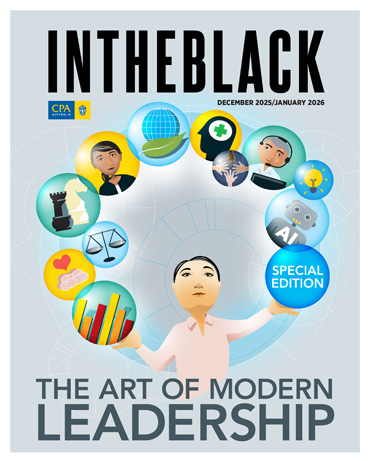Loading component...
At a glance
By Lisa Uhlman
Productivity growth is a central focus of economic policy, yet John Quiggin, professor of economics at University of Queensland, believes the tools used to measure it no longer reflect how people actually work.
In this INTHEBLACK podcast episode, Quiggin discusses how, in an economy reshaped by technological change, thinking around productivity also needs to evolve.
Evolving economy, familiar tools
For much of the 20th century, productivity was easy to visualise, but the modern world of production is far more complex, comprising the labour, capital and other inputs required to produce something, as well as aggregated output.
“That gets much more complicated than simply how many shoes per hour a shoemaker made or how many tonnes of wheat a hectare produces,” says Quiggin.
To reflect that complexity, in the 1990s the Australian Bureau of Statistics and the Productivity Commission began to champion a measure known as multifactor productivity (MFP).
"We need to be looking at a whole bunch of different things and trying to keep them in our head, rather than worrying too much about single numbers."
“At that time, they had a very good news story to tell — we’d had a bunch of economic reform, and it seemed like we were getting this big acceleration in multi-factor productivity,” Quiggin says.
But the growth soon dropped and has remained weak throughout the 21st century.
“We had just had a big recession. Everybody was being pushed to work harder and longer,” Quiggin says, with financially strapped workers, for example, more willing to work overtime.
“As the economy improved, people started being unwilling to do that, and so we haven’t really seen that strong productivity growth since the turn of the century.”
A broader view of productivity
As productivity growth has slowed, computers have helped to sustain output as they have become increasingly cheaper and more powerful.
“We’ve been able to produce more, even though in a quantitative sense it doesn’t look like we’re going anywhere,” Quiggin says.
The complexity of 21st century economic activity, and the challenges to fully measuring it, make Quiggin sceptical of the search for a perfect metric to represent “how well off we are” — and not just how much we produce.
“We need to be looking at a whole bunch of different things and trying to keep them in our head, rather than worrying too much about single numbers,” he says.
The rise of remote work also underscores why traditional metrics are no longer sufficient, with newly relevant factors like time saved on commutes making “any number start to be less meaningful”, says Quiggin.
“None of that is measured in GDP at all. Certainly, the time people have saved commuting to work doesn’t appear, because commuting time never appeared in GDP in the first place.”

